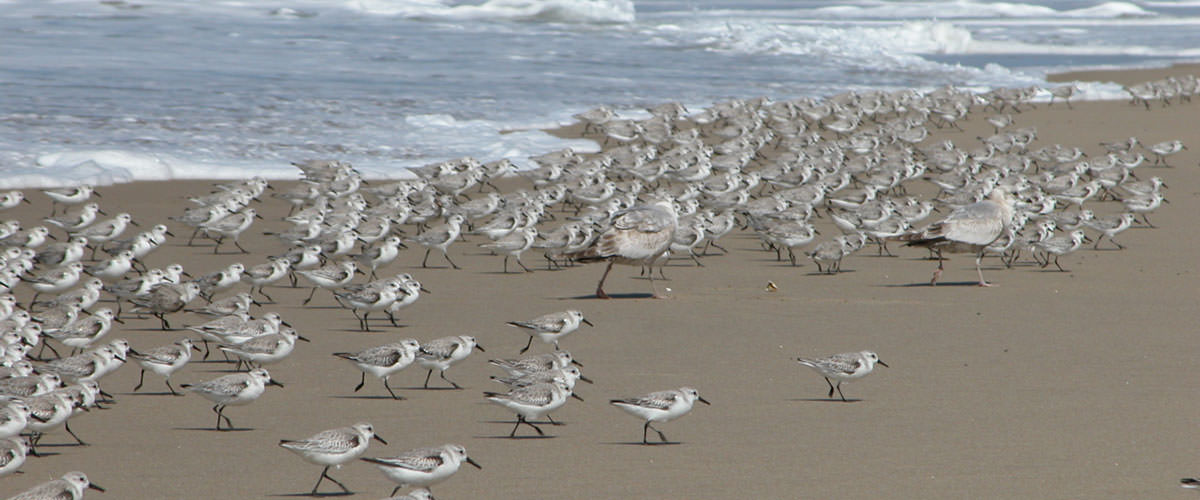Monterey Bay

Click on individual links below to learn more about the immediate science needs for critical management issues. For a full list of management issues and science needs, please review the MBNMS Management Plan. To contact us about the science needs described below, contact the Sanctuary Research Coordinators.
Improved methods for detecting contamination are required to more effectively protect Monterey Bay National Marine Sanctuary beach visitors from exposure to waterborne pathogens. (Updated September 2022)
The effects of climate change, including rising water temperatures and sea levels, ocean acidification, and shifting ecosystem structure, have the potential to impact Monterey Bay National Marine Sanctuary. (Updated September 2022)
The unique habitat and organisms associated with Davidson Seamount must be characterized and studied to enhance understanding of resource protection needs within Monterey Bay National Marine Sanctuary. (Updated September 2022)
Better understanding of deep-sea benthic habitats and communities is required to enhance understanding of resource protection needs within Monterey Bay National Marine Sanctuary. (Updated September 2022)
Characterization of the seafloor on the continental shelf in Monterey Bay National Marine Sanctuary is necessary to ground truth habitat maps and inform sanctuary management. (Updated September 2022)
Characterization of the seafloor on the continental slope in Monterey Bay National Marine Sanctuary is necessary to ground truth habitat maps and inform sanctuary management. (Updated September 2022)
Improved understanding of harmful algal bloom patterns and drivers could help to reduce these events and their impacts in Monterey Bay National Marine Sanctuary. (Updated September 2022)
Understanding the spatial and temporal distribution and intensity of human activities in Monterey Bay National Marine Sanctuary can aid in managing these activities and promoting sustainable use. (Updated September 2022)
A better understanding of the long-term ecological impacts of desalination will allow managers to adequately protect Monterey Bay National Marine Sanctuary ecosystems from threats associated with planned desalination plants. (Updated September 2022)
Better understanding of interactions between marine species and motorized personal watercrafts in Monterey Bay National Marine Sanctuary would aid in public education and outreach efforts related to this activity. (Updated September 2022)
Monterey Bay National Marine Sanctuary requires information on the long-term ecological effects of plane and ship groundings and sinkings to enhance sanctuary management. (Updated September 2022)
Introduced species are a major economic and environmental threat to the living resources and habitats of Monterey Bay National Marine Sanctuary, as well as the commercial and recreational uses that depend on these resources. (Updated September 2022)
Monitoring kelp forests is necessary for further understanding of how changes in kelp canopy cover will impact Monterey Bay National Marine Sanctuary resources. (Updated September 2022)
Monitoring in state-established marine protected areas is necessary to better understand how this new level of protection will impact Monterey Bay National Marine Sanctuary resources. (Updated September 2022)
The maritime cultural landscape approach provides a comprehensive framework for better identifying, understanding, and interpreting the variety and significance of maritime heritage resources in Monterey Bay National Marine Sanctuary. (Updated September 2022)
Sand can be transported rapidly within Monterey Bay National Marine Sanctuary and is important to consider in relation to the installation or removal of any coastal structures. Hard coastal armoring in the sanctuary can potentially damage or alter local coastal habitats, interfere with sediment transport, unintentionally increase erosion, and negatively impact biological resources. (Updated September 2022)
The ability of managers to adequately protect Monterey Bay National Marine Sanctuary nearshore habitats in the Big Sur region from terrestrial inputs (e.g., landslides, debris flows) is hindered by incomplete knowledge of the oceanography, biology, and geology along the coastline of Big Sur. (Updated September 2022)
There is a need to assess the impacts of uncrewed aircraft systems on wildlife, including species sensitivity, geography, uncrewed aircraft system size, noise level, flight altitude, and time of year. (Updated September 2022)
Management of water quality in Monterey Bay National Marine Sanctuary requires sophisticated planning, strategic implementation of best practices, comprehensive monitoring of conditions and management effectiveness, data integration, analysis, and reporting across a diverse group of institutions. (Updated September 2022)

